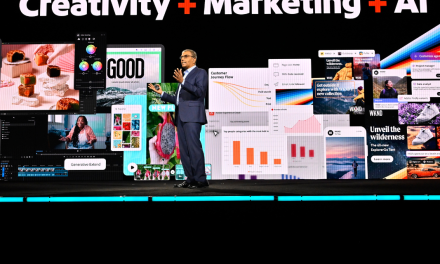As we navigate our way into 2024, the leaps in martech and adtech – not least, in artificial intelligence (AI) – give professionals in the field food for thought.
While the prospect of expanding reach and growing customer base is inviting, businesses must grapple with the proliferation of online platforms, larger and more varied data sources, as well as multichannel customer interactions.
But one thing is clear; as the martech landscape shifts, content strategy must be adaptable – and these five trends will shape the martech and adtech verticals in the coming year.
1. Differentiation through hyper-personalisation
The days of generic campaigns have long been resigned to the dustbin of history. In fact, a McKinsey survey found that 78% of respondents were more likely to repurchase from a brand that delivered personalised content.
And with Google set to gradually disable cookies starting in 2024, harnessing the power of first-party data to truly understand customers is a no-brainer. This can be further augmented with AI – which will further boost customer loyalty.
At the same time, businesses in the Asia Pacific need to remember that committing to strategically putting the customer first must be supplemented with adequately formalised and efficient measurements to gauge performance over time.

2. The AI floodgates have well and truly opened
The past 12 months saw AI free itself from the confines of labs and hit the mainstream – with call centres and chatbots among the first use cases to emerge. And 2024 will only see AI expanding into more areas, with headway in the technology’s language and sentiment capabilities set to increase customer satisfaction.
Also keep an eye out for chatbots gathering user preferences – a.k.a zero-party data – to make recommendations, crossing the divide from service support to conversational marketing applications. The second wave of AI usage will see the technology cement its mainstream credentials, with techniques encompassing personalised shopping experiences on websites and embedded AI on platforms such as mobile phones and wearable devices.
However, AI will also be experienced differently across the region. The Asia Pacific is highly diverse, and while poised for growth, maturity varies widely. The likes of Singapore and China are by all accounts leading the pack, but this could also be a source of strength as the region explores and experiments.
3. It’s an exciting time for productivity
The remarkable feats of generative AI and its subsequent widespread adoption have been quite revolutionary. This explains why it took just two months for OpenAI’s ChatGPT to gain 100 million users.
Expect this momentum to carry over into 2024, with marketers on the brink of experiencing real and tangible benefits from this technology, particularly in terms of productivity and creativity enhancement. In no small part, this is because the incoming wave of AI-powered assistants is poised to automate repetitive marketing tasks, facilitate data analysis and utilisation, and streamline campaign and customer journey management.
With professionals and experts given unprecedented freedom to focus on tasks that truly matter, we’re on the cusp of a new era of efficiency and creativity.
4. Governance to be put to the test
Many organisations are in need of a re-consideration of their data governance, security, and privacy practices. Fuelling this is data deprecation and the new emphasis on zero- and first-party sources, as well as second-party sources such as data clean rooms, networks, and exchanges. Here’s where the wheat separates from the chaff, because some brands have instituted comprehensive data compliance practices, while others lag behind.
It’s critical to remember the double-edged quality of emerging technology like AI – and there is considerable regulatory zeal. Malaysia, for one, is developing an AI code of ethics and governance, which is slated to be ready next year. Over in Singapore, authorities have launched AI Verify to tether AI testing to 11 internationally recognised principles. This will seriously test organisational data governance practices. Responsible marketing, particularly vis-a-vis data, will be a major factor for brands in 2024.
Avoiding the speed bumps to innovation will hinge on using customer and marketing data responsibly, which will hopefully impel brands to take a strong, fresh look at their data processes.
5. CMOs zero in on tech aggregation and complexity
53% of marketing respondents told Gartner they are too overwhelmed by existing technologies to explore emerging ones. Meanwhile, CMO Council found that integration – between systems and data – as well as technical agility dominated the top concerns in a recent report. Clearly, tech aggregation and complexity are keeping CMOs up at night.
Now is absolutely the time to take charge and overcome the inability to bring together point solutions into a martech platform solution. What is needed is a pivot towards a multi-channel marketing solution. Ideally, this will be architected atop a cloud-based data store with direct access to data from within its own user interface (UI) and has native capabilities to deliver marketing communications.
At the same time, this solution should also offer Out-of-Band (OOB) capabilities that orchestrate journeys to a myriad of other vendors for delivery, and can accommodate third-party decisioning engines for real-time analytically driven decisions and model scoring.
While tech stack aggregation may not reduce the number of players in the martech landscape, it will be a much needed boon for technical agility, returns on investments, and, crucially, help CMO’s increase utilisation of existing applications.
The coming months are shaping up to be a year of exciting trends and advancements that will reshape how businesses engage with audiences. And in the competitive landscape of today, cohesion is key – which is why thriving in 2024 will rest on aligning martech with overall company strategy.
The onus will be on marketers to clarify objectives, assess current capabilities, and plug gaps while striving to break new ground. Ultimately, it is this which will propel understanding of and empathy for customers.


















